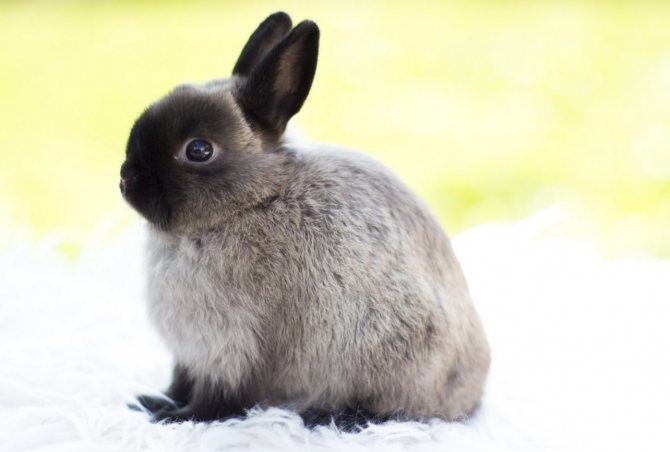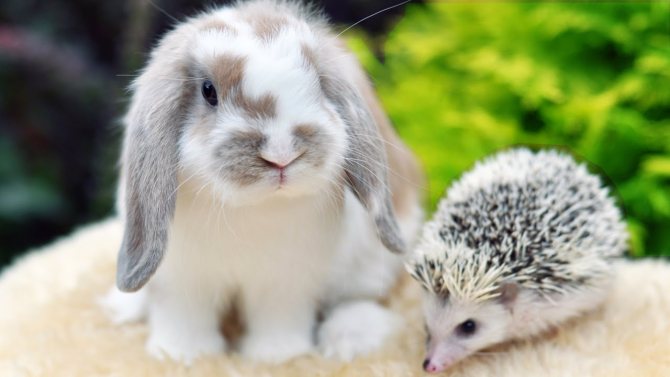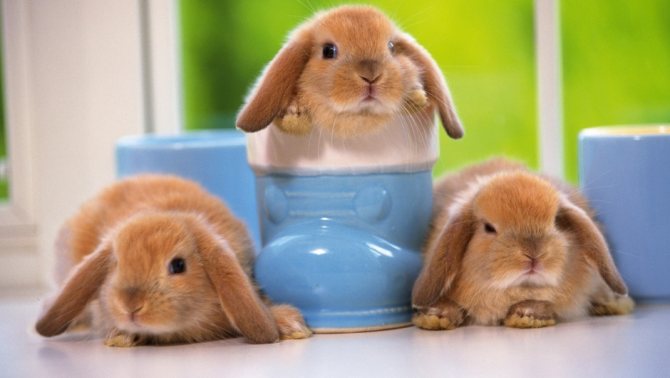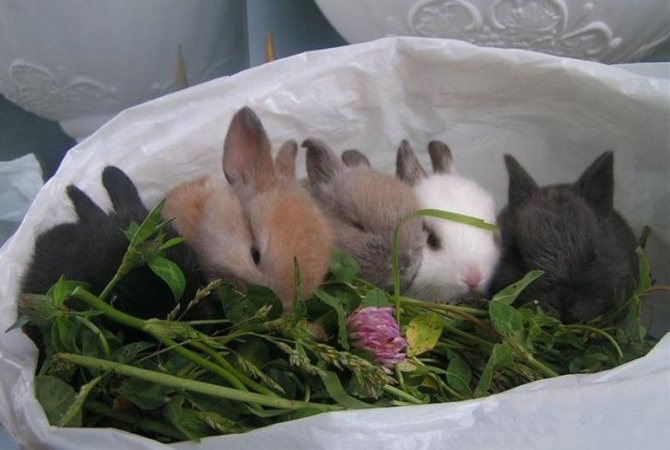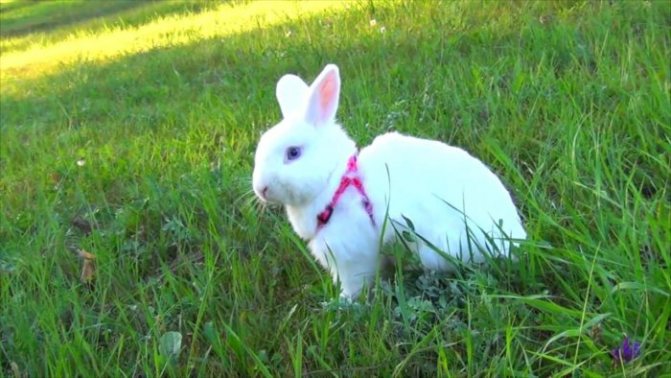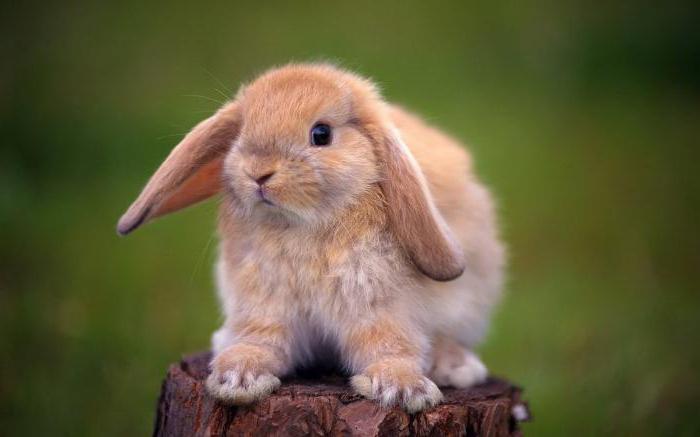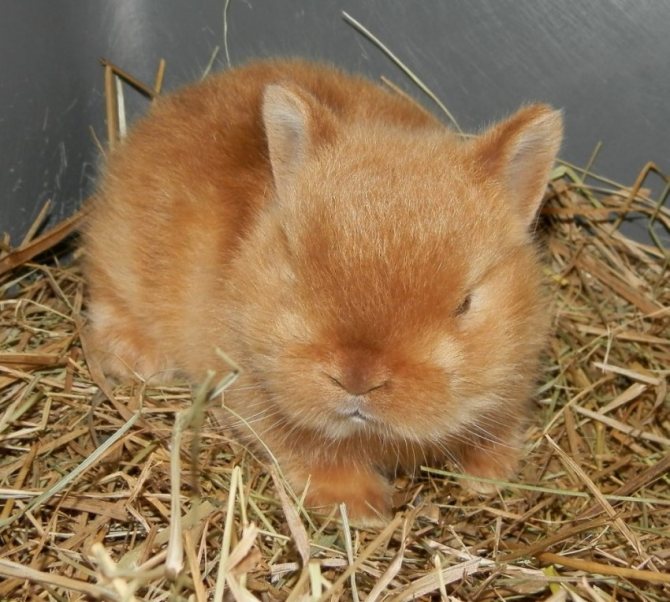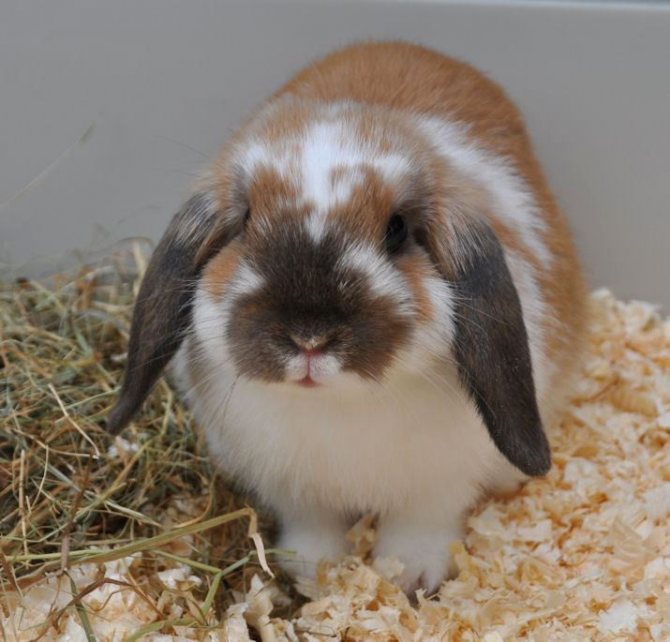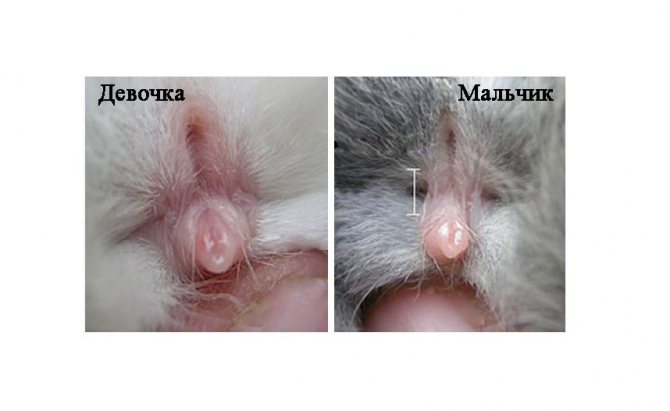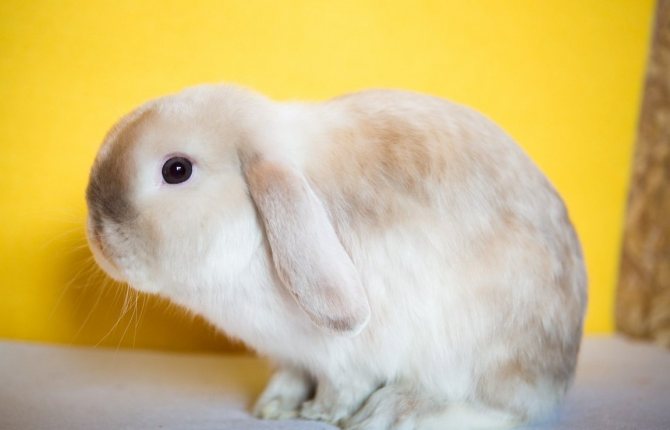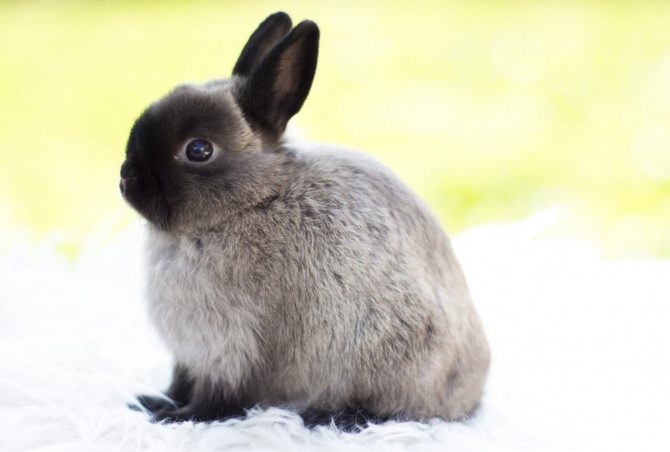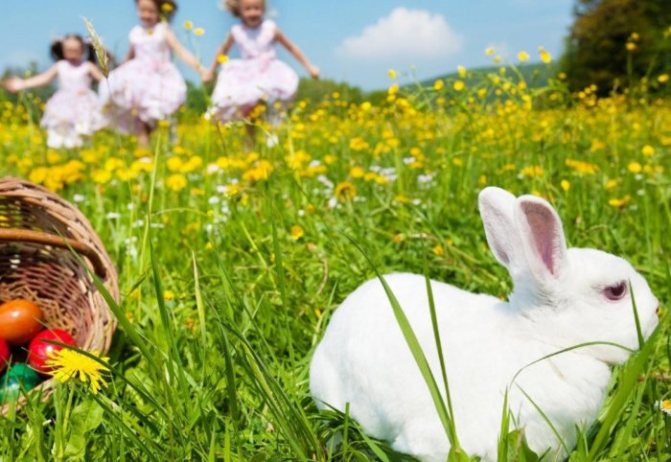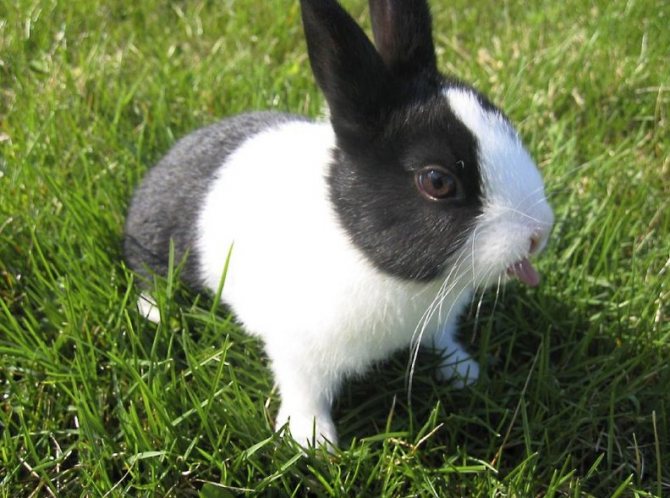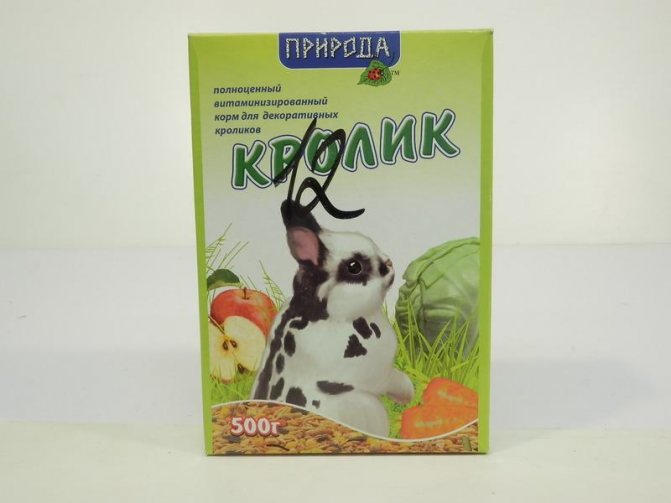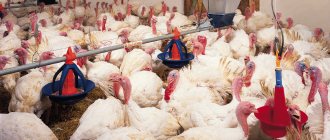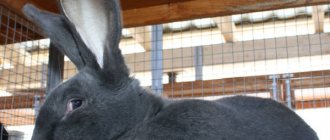Any rabbit that is kept as a member of the family can be considered decorative, regardless of breed and size. However, most often, "decorative" means dwarf animals, bred specifically to become pets. It is a mistake to think that keeping a rabbit at home is much easier than keeping a cat or dog. Eared pets require care and affection, and an attentive owner needs to arm himself in advance with the knowledge of caring for a new friend. In this article, you will learn about the conditions for keeping a pet.
Breeds of decorative rabbits

- Dwarf... These are small multi-colored rabbits with shiny fur and small ears. Among the dwarfs there is a subspecies of Hermelin red-eyed, or the Polish rabbit. The females of hermelin have a complex character, and the males are very lazy.
- Rex... Breed with plush hair.
- Lop-eared rams... These rabbits have drooping ears and a calm disposition.
- Angora rabbits... Pets of this breed have long hair - up to 20 cm, which looks beautiful, but requires constant care.
How to choose the right individual
In order not to get lost in the variety of breeds, you need to correctly determine the criteria for your choice. Find out more about the temperament of the breed that suits you and also consider the costs that will be incurred.
Breed selection criteria:
- the degree of friendliness;
- behavior towards strangers;
- the degree of daily activity;
- weight - miniature breeds should not be bought for families with children, in order to avoid injuries to the rabbit;
- disease resistance;
- the need for daily care.
Ask the breeder about the breed and characteristics of the rabbits in a particular litter. While you are communicating, observe the behavior of the kids. Don't choose a pet based on breed knowledge alone. Make sure the rabbit you choose is healthy. He must be active and energetic. The fur is shiny, without bald patches and parasites.
Important! For families with children under 13, the male is more suitable
—
he is less fearful than the female. This concerns sudden outbursts of tenderness on the part of children.
Swipe your hand on both sides of the body - you should not feel any signs of damage or swelling. Both sides of the body should feel the same.
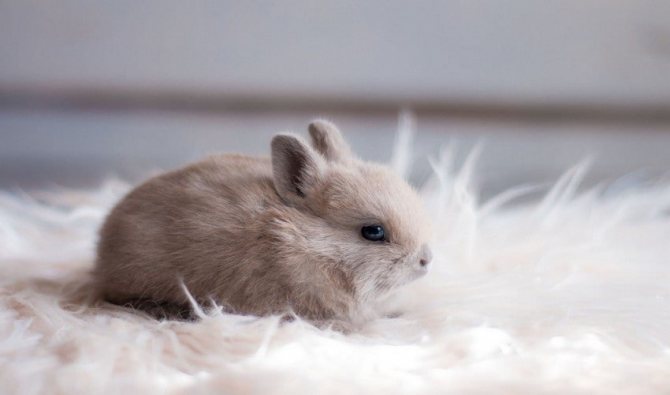

Pet rabbit care
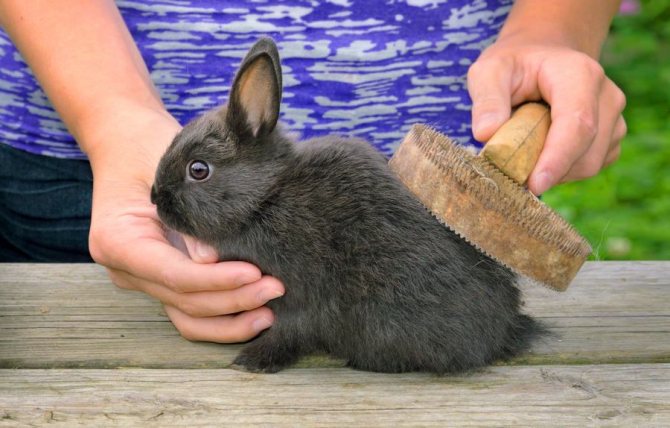

- Better to buy a cage first, and then a rabbit. Pets have a fragile spine, they are carefully taken in their arms, they should not be allowed to fall from a height: animals may die.
- Decorative rabbits are shy, they should not be left to communicate with other pets or babies, they can get sick from stress and fast races.
- Pets do not tolerate both overheating and drafts poorly. The heat exchange of rabbits occurs through the ears, and if it is hot in the room, it is worth moistening them with a cloth with cool water.
- You can not expose the cage with a rabbit in the sun or a place of drafts: the animal can get sick.
- The optimal conditions for keeping a decorative rabbit are 50% humidity and a temperature of about 20 degrees.
- Rabbit hair falls off and needs to be brushed regularly.
Conditions of detention
Decorative rabbits need good care. The owner must provide them with proper conditions of detention.Before purchasing a pet, you need to buy a cage, inventory, and also decide which corner of the apartment will be allocated for it.
Cell selection
The choice of the cage must be approached with all seriousness, because the pet will spend most of its life in it. What you should pay attention to:
- The size. The dwelling of a decorative rabbit should be spacious - about 4-5 times the size of the pet itself. Inside a good cage, there is a tray, a manger for hay, a bowl for food, a house for sleeping, with all this there is free space for the pet to move and play.
- The quality of the materials. It is better to give preference to a cage made of metal with a fine lattice, it should not be painted. Plastic cages often contain harmful impurities that can lead to allergies in the animal.
- Safety. The rabbit house should not have sharp parts, otherwise the animal will be injured.
- Structural strength. The cage should last at least 3-4 years. Do not forget that rabbits will gnaw on the details of their home.
- Floor. It is best to choose a cage with a smooth floor, and not with a lattice, otherwise the pet's delicate legs will suffer. Because of the grate on the floor, rabbits sometimes develop a disease - pododermatitis.
Advice. If several pets are supposed to be kept, then it is advisable to provide each of them with a separate dwelling. It is permissible to keep two castrated males together, rabbits from the same litter, or a female and a male.
Seat selection
A decorative rabbit in an apartment will feel comfortable if you choose the right place where to put the cage. Eared animals are afraid of cold, draft and intense heat. In such conditions, they can die. In addition, animals are shy. This means that the cage should be installed in a secluded place where the pet will be calm.
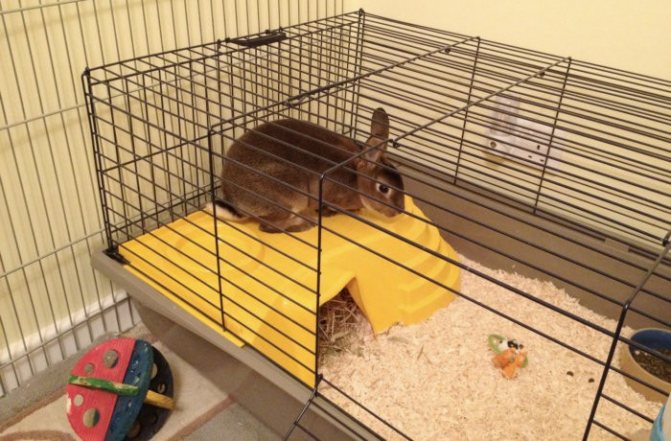

Rabbit in a cage
Unsuitable places for the cage:
- Passage corridor, where children run, strangers enter.
- Children bedroom. A child may develop allergies through constant contact with an animal.
- Kitchen.
- Cold loggia. If the balcony is not insulated, the animal will be cold. The optimum temperature for keeping decorative rabbits is from +16 to +24 degrees.
You can put a cage in the living room, where the whole family gathers for joint relaxation and communication. A glazed and insulated loggia is an excellent choice. No one will disturb the rabbit there, but it is important to take care that the cage is not in a draft or in direct sunlight. It is better to place the rabbit dwelling on a low stand or pedestal, and not on the floor.
Important! The cage should not be installed near an air conditioner or heating radiators.
Additional inventory
In addition to housing, the rabbit will need other equipment to help him feel comfortable. What items you need to buy, deciding to have a decorative rabbit:
- Tray - one or more. One tray is installed inside the cage, others in the apartment. The toilet should have high sides on three sides so that the filler does not spill out of it onto the floor. Choose a litter box that is large for your rabbit to use.
- Drinking bowl. Pet stores sell automatic drinkers for rabbits. Their advantage is that they cannot be turned over, they are attached to the cage lattice, and the water there remains fresh for a long time. You can make a drinker with your own hands from a plastic bottle.
- Manger for hay. Hay is included in the diet of the eared eagle every day. The daily consumption rate is a bunch of the size of a pet. He is placed in a special feeder. The stores sell a nursery that is attached to the cage or placed on the floor. The first option is more convenient.
- Mixed feed bowl. Rabbits are mobile, and therefore a bowl should be chosen heavy, which is difficult to overturn. It is worth considering the option of a feeder with attachment to the cage wall.
- Carrying.The owner of the animal will certainly need a plastic carrier if it needs to be taken to the veterinarian for examination or vaccination.
- Toys. The decorative rabbit loves to be active. It is worth placing several toys in the cage, for example, a wheel or various devices - labyrinths, mats. The pet will like to play with them - gnaw, run, disassemble, scratch.
- House for a rabbit. The pet must certainly have at its disposal a secluded corner where he can hide from danger or just relax. A small house is placed in a cage.


Rabbit house
Cage for a decorative rabbit


It is better to take a one-meter cage, and if the pets are large - 1.40 m, with a non-slippery bottom. The cage tray is preferable to plastic, not lattice. You need to purchase a dry food trough, an automatic drinker and a hay nursery.
All devices should be well secured, otherwise the rabbit will make noise when playing in the cage. As a bedding, it is good to spread straw or sawdust with a layer of 3-5 cm.
The litter box must be clean, cleaned in time: the second time the animal will not go into the litter box and will arrange a “toilet” nearby.
Periodically, the cage needs cleaning with a disinfectant. You can use "Delegol".
It is worth remembering: that due to violations of the rules of hygiene of his home, the rabbit may begin to sneeze, cough.
Feeding
How to feed a dwarf rabbit? There should always be fresh hay in the cage, as the rabbit has to chew something all the time. This is how their body works. A rabbit can eat about 30 times a day.
Many also don't know how to feed? You can harvest hay yourself or buy it. Before putting the hay in the cage, you need to add some salt to it. You also need to give branches from trees or raspberry bushes.
What else can you feed? It is necessary to periodically give the rabbit and store food with vitamins. Barley and wheat are good for the stomach.
You can feed the dwarfs with vegetables and fruits. Also rabbits love cabbage. A little chalk should be added to the feed.
The leftovers should be thrown away immediately, and the food should be filled up in small portions and often. Hay should be placed separately from the feeder. During the feeding period, the animal should not be distracted. A healthy rabbit has almost everything.
See also How to distinguish the sex of a decorative rabbit, a boy from a girl?
Lactating females can be given mineral complexes separately. During this period, it is better to move the rabbit to a separate cage.
Walking
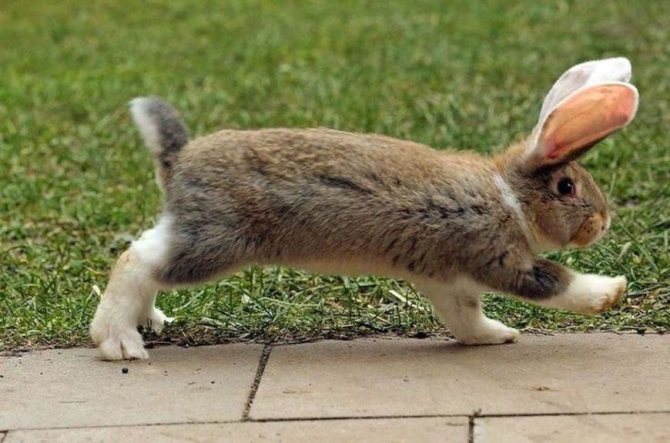

In order to avoid troubles with a rabbit with joints, nervous system and immunity, the animal needs to walk for at least 20 minutes a day: in the summer - on a leash on the grass, and the rest of the time - on the floor in the apartment.
When the rabbit "walks" at home, it is necessary to remove everything potentially dangerous to it from the path:
- glass jars,
- wires,
- poisonous plants.
It is also worth making sure that the rabbit does not get stuck in any gap.
It is necessary to put toys for animals in front of him, otherwise he will gnaw what he finds himself. In this case, the cage must be open and accessible for the return of the animal.
How to handle a rabbit correctly?
Take rabbits in your arms carefully. To do this, you must observe the following rules:
- Raise the rabbit with both hands, not one.
- To raise the animal from its place, with one hand it is taken under the front paws in the chest area, and the back of the body is held with the other.
- The withers can only be taken if the second hand is holding the sacrum at this moment.
- Raise the rabbit only if you are sure that it is well fixed in order to avoid injury to the animal.
IMPORTANT! It is forbidden to lift the rabbit by the ears, paws, tail or scruff of the neck.
Rabbit food


Rabbit menus are:
- Hay.
- Water.
- Compound feed with granules.
- Branches.
- Mineral stones.
There should be a lot of hay, it promotes good digestion and grinding of teeth.
Water should be poured chilled boiled and changed daily. Twigs are important for grinding teeth, and mineral stones are important for saturating the body with necessary substances. Depending on the age, the rabbit needs 2-6 tablespoons of compound feed per day.
It is recommended to add herbs to the diet of rodents from 4 months, but before stool disturbance. Parsley and dill should not be offered, chamomile and alfalfa are better.
What to feed and how to drink
The rabbit is a pet that does not require a varied diet. The animal's diet includes:
- Compound feed - a balanced feed containing a full range of essential vitamins and minerals. Kids are given 1 tbsp. spoon 3 times a day. Adults - 2 times a day for 1-1.5 tbsp. spoons.
- Hay - an indispensable product required for grinding teeth. The leader in protein content is nettle hay.
- Sprigs of pear, apple, willow, aspen and poplar. In summer, you can give branches with foliage, in winter - coniferous branches.
- In the summer, instead of hay, they give mixture of dried herbs - yarrow, stellate and common hogweed. Dried plants will work with calendula, asparagus, and hop stalks.
- Greens - grass of quinoa, dandelion, wheatgrass, rhubarb leaves, clover.
- From garden plants - leaves of radish, carrots, turnips, strawberries, Brussels sprouts and savoy cabbage, salads.
- Vegetables - tomatoes, squash and cucumbers without seeds, carrots and turnips.
- Fruits - small quantities of apples, pears, bananas, melons and watermelons.


You cannot give:
- Exotic fruits.
- Branches from sweet cherry, cherry, walnut, buckthorn, apricot, peach.
- Potatoes, nuts, red beets.
- Legumes in large quantities.
- Red cabbage, white cabbage and cauliflower.
- When harvesting hay, make sure that there is no celandine, hemlock, dope, tansy in it.
- Foods containing carbohydrates - pasta, croutons, bread and pastries.
- Candy, biscuits, sausage, and other human treats.
The drinker should always have clean, preferably boiled and cooled water, which must be changed every day.
Did you know? While eating food, the rabbit makes two chewing movements per second, that is, it makes 120 jaw movements per minute.
Rabbit health
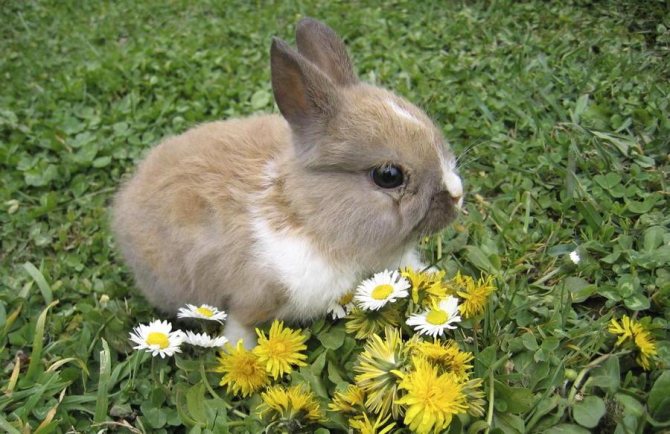

In addition to infectious diseases, decorative rabbits are susceptible to helminthic invasion. On a quarterly basis, the animal, even if it does not appear on the street, should be given antihelminthic drugs.
The rabbit also needs vaccinations. It is especially worth focusing on the vaccine against HBV (viral hemorrhagic disease) and against myxomatosis.
You should start vaccinating rabbits from 6 months. Other diseases can be vaccinated when an epidemic develops in the region.
How long do dwarf rabbits live?
With proper maintenance, a rabbit can live long enough. In rabbit droppings, there are individuals that live an average of 6 years. How long a rabbit lives depends on the correctness of its maintenance and care. Therefore, a lot depends on the owner. How many years do rabbits live with proper maintenance? They can live for a maximum of 12-13 years.


Puberty of rabbits
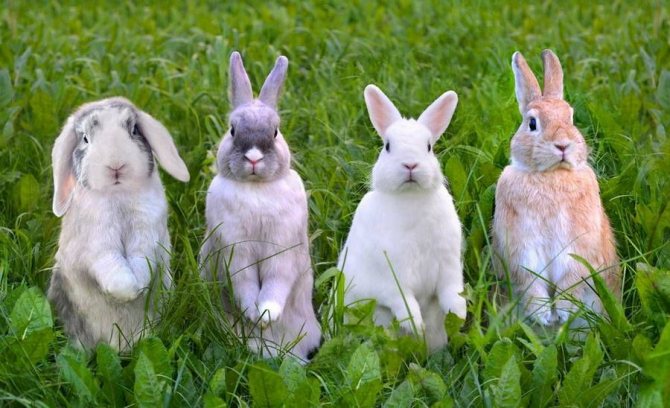

No drugs have been invented to reduce the sexual activity of rabbits, the only option is to neuter / neuter the animal.
Sterilization is possible when the rabbit reaches 6 months, and the neutering of a young rabbit is safe from 2.5 months, but it is recommended from 5.
Previously, such operations were considered dangerous due to the poor tolerance of anesthesia by rabbits, but modern anesthesia drugs solve this problem.
Previous post The most beautiful cities in the world
Next Post The worst prisons in the world
Diseases and compulsory vaccinations for rabbits
You can protect your pet from a certain number of diseases by making timely vaccinations. So, rabbits are vaccinated against such ailments:
- myxomatosis;
- pasteurellosis;
- salmonellosis;
- rabies;
- listeriosis;
- paratyphoid.
IMPORTANT! In the event of an outbreak of a disease, all animals in the designated area are vaccinated.
The following diseases can occur in rabbits:
- problems with the functioning of the gastrointestinal tract;
- diseases of the oral cavity;
- otitis media;
- helminthic invasions;
- being overweight or underweight;
- diabetes;
- problems with skin and coat.
Lack of proper care of the animal can cause any of the above diseases.



